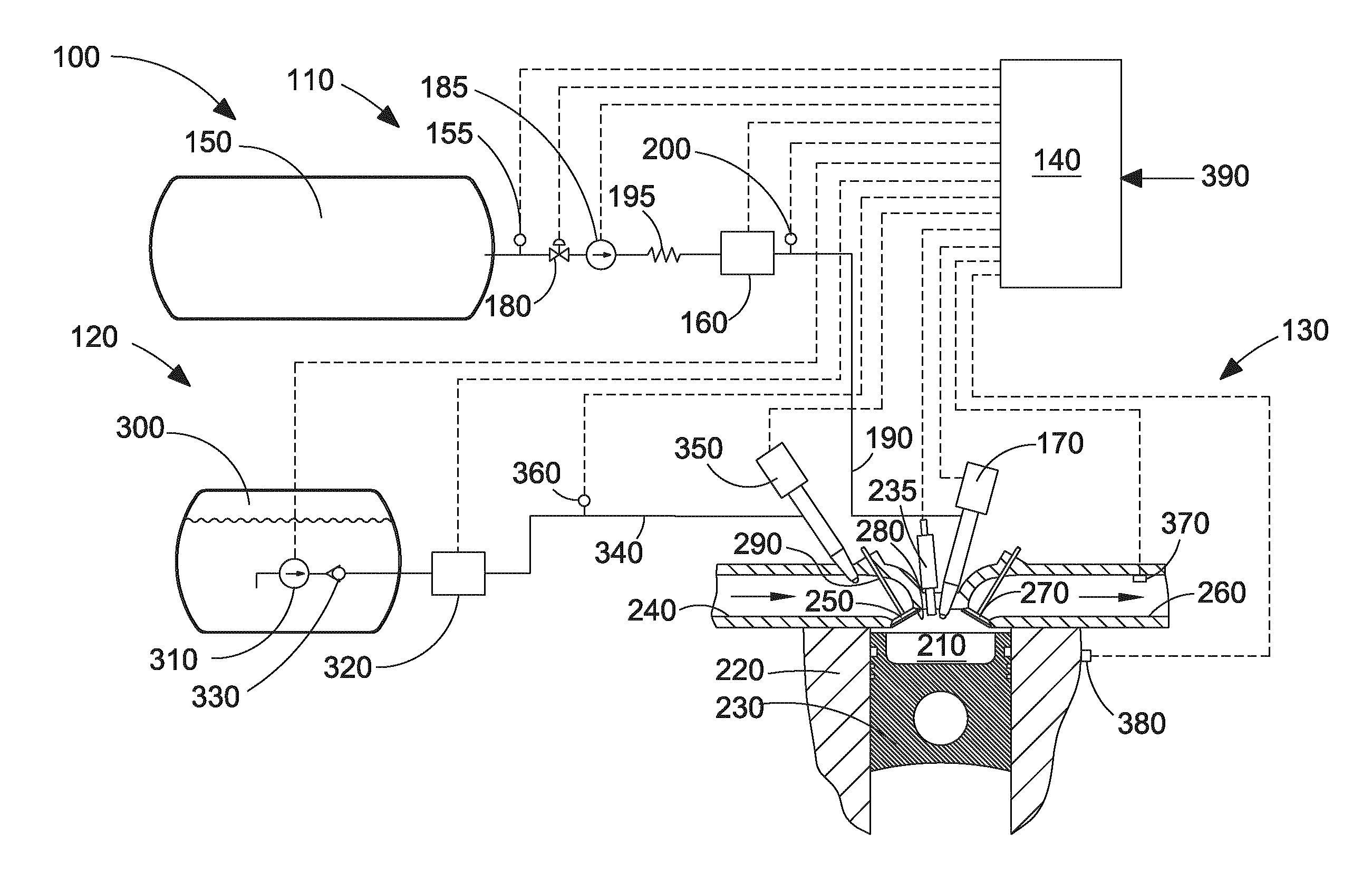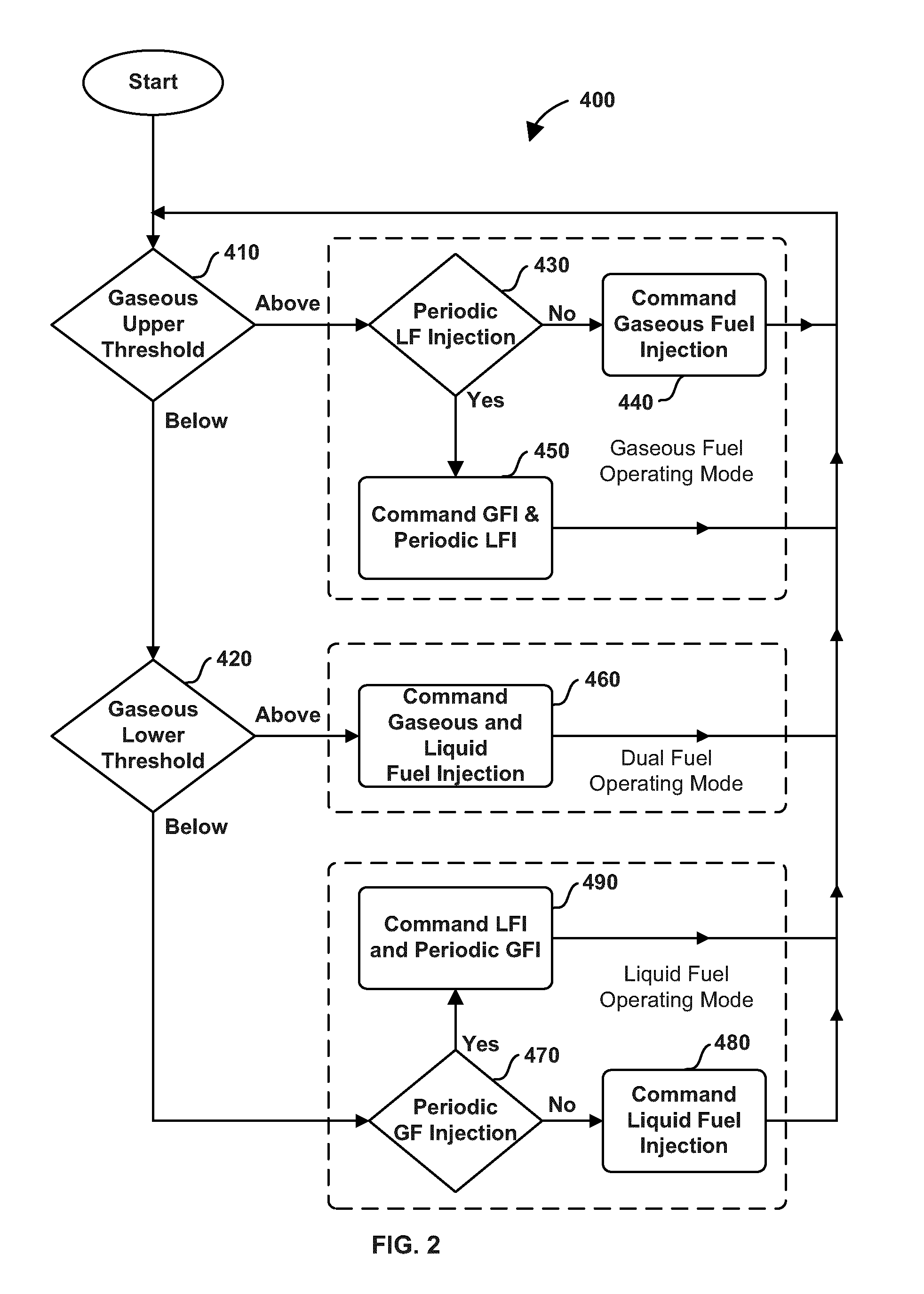That is, fuel costs influence how consumers will invest in automobiles that consume
natural gas or fuels derived from
crude oil, such as
gasoline and diesel.
However, as standards for emissions are continually becoming more stringent, manufacturers are finding it more difficult to meet these standards with catalytic
converters alone, or with changes to well established engine control systems.
Automobile manufacturers are now considering alternative fuel vehicles, and especially bi-fuel vehicles fuelled with
natural gas as one fuel or gasoline as another fuel, as a means for meeting current and future emissions standards, as emission reductions achieved by catalytic
converters are approaching the current paradigm limit and further improvements in such
converters are more difficult to obtain.
The performance and emissions of these vehicles are less than optimal due to a limited cooperation between the original engine
system and the aftermarket
system.
Gasoline vehicles converted to run on
natural gas suffer a performance penalty due to the low
compression ratio of the gasoline engines, resulting in a reduction of delivered power (10%-15%) while running on natural gas.
Such bi-fuel vehicles are optimized to operate with gasoline and are typically less efficient when fuelled with natural gas.
Again, both conversion techniques were sub-optimal solutions due to limited cooperation between the original engine
system and the conversion kit, the compression ratios employed, and due to performance limitations inherent in low pressure natural gas introduction through the intake valve.
Since gaseous fuels like natural gas are compressible fluids it is more difficult to manage higher injection pressures and there is an energy penalty associated with compressing gaseous fuels to higher pressures.
However, because the fuel is pre-mixed with the intake air, natural gas spark ignition engines operate at modest compression ratios in the range of 9:1 to 12:1, in order to prevent engine knock, which can cause serious engine damage.
High pressure direct injection of natural gas, that is, injection beginning late in the compression
stroke, for example 20° before and after
top dead center, involves greater technical challenges in the fuelling system.
However, even at this relatively low
injection pressure, compared to liquid fuels, there is still a significant energy penalty for pressurizing the fuel and there is a significant
capital cost associated with equipment needed to raise the gaseous fuel pressure.
It is known that as the on-time of the injector is decreased ballistic mode effects in the injector can decrease the accuracy of the quantity of fuel delivered.
However, these same factors can deter the acceptance of this technology for
light duty vehicles which consume less fuel and have lower power requirements.
However, when combining conventional direct-injection gasoline injectors and either port or direct injectors of natural gas in bi-fuel vehicles, under normal operating conditions, the gasoline injectors are subjected to intense heat.
Then, the uncooled gasoline injectors heat up and can become damaged.
Additionally, liquid fuel held inside the charged injectors begins to form deposits which tend to
restrict the flow of fuel, with this adversely affecting injector behavior.
The longer CNG mode continues with dormant gasoline injectors the greater the risk for accumulation and hardening of deposits inside the gasoline injector.
This method results in greater use of gasoline in order to maintain the integrity of the gasoline injectors, which increases emissions of pollutants from combustion and which can lead to greater fuel costs and more frequent trips to fuelling stations in order to maintain the fuel available in multiple fuel tanks.
 Login to View More
Login to View More  Login to View More
Login to View More 


